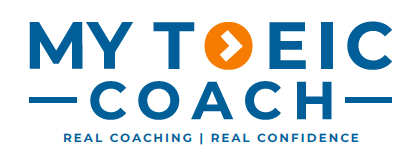🎯 The Motivation Trap: It’s Not Laziness — It’s Misalignment
Why do you lose motivation studying TOEIC Listening? It's often not laziness, but a misalignment between your effort and a clear "why." Discover how to reignite your drive by making listening a mission, tracking tangible progress, and using ALT to remove invisible blocks.
Many people blame themselves when they lose motivation to study TOEIC Listening.
But motivation isn't just about willpower — it's about meaning.
If your study doesn’t feel connected to your real goal, your brain shuts down.
And listening, more than any other part of the test, quickly exposes this disconnect.
🎮 Imagine a Game With No Clear Objective…
You’re dropped into a game.
No explanation. No mission. No reward.
You run around. You push buttons. You get bored. You stop playing.
That’s what TOEIC Listening feels like for many learners.
You’re listening to announcements and business conversations — but you don’t know why.
You don’t know the real reason you’re doing it. It just feels like noise.
🚫 Motivation Dies When There's No Feedback
With reading or vocabulary, you can see your improvement.
You understand more words. You solve questions faster.
But with listening, improvement is silent.
You don't feel smarter, even when you are.
That creates doubt:
“Am I even improving?”
“Why is this still so hard?”
“Maybe I'm just bad at this…”
That doubt kills motivation.
💡 Reignite Motivation with These Shifts
1. Make It a Mission, Not a Mystery
Before you listen, ask:
What’s the speaker’s goal?
What kind of answer are they probably leading to?
This gives your brain a reason to listen.
2. Track Progress You Can Feel
Instead of just checking answers, track your:
Number of questions you understood on the first try
Ability to predict answers before the choices
Time taken to finish each section
Real progress builds real motivation.
3. Stop Isolating Listening
Listening doesn’t grow in a vacuum.
If you haven’t prepared with vocabulary, patterns, and strategies… listening will always feel too fast.
Motivation fades when the challenge always feels out of reach.
🔓 Motivation Isn’t Missing — It’s Blocked
You don’t need to “try harder.”
You need to remove the friction.
That’s what Accelerated Learning Technology (ALT) does.
It removes the invisible blocks — the ones that tell your brain,
“This is pointless”
“I can’t keep up”
“I’ll never get it”
When those disappear, motivation comes back.
Not because you forced it.
Because now, your effort feels like it matters.
Want to Learn More?
Our blog is full of practical strategies that help test-takers like you build better habits, overcome common blocks, and improve TOEIC scores through smarter, easier methods. Try our free TOEIC Block quiz now!
🎯 It’s Not Just a Number
Your TOEIC score isn't a judgment of your English or intelligence; it's a snapshot of your test performance. Discover how to read your score as a map to pinpoint specific areas for improvement, and stop seeing it as a limit on your potential.
People often see their TOEIC score and think:
“I’m not good at English,” or
“Why is my score still low after all that study?”
But a TOEIC score isn’t a measure of intelligence.
And it’s not even a full measure of your English.
It’s a snapshot of how well you can handle a specific test, under specific time pressure, using specific skills.
Your score tells a story — if you know how to read it.
🔍 A Score is a Signal, Not a Label
A 600 and a 730 and an 800 don’t just mean “low,” “okay,” and “good.”
They mean something very different:
A 600 often means:
→ You understand a lot — but under pressure, you miss pieces.
→ Your foundation is there, but your habits aren’t test-ready.A 730 usually means:
→ You’re solid — but you lose time or get tricked by traps.
→ Your understanding is strong, but your reactions need tuning.An 800+ means:
→ You play the test like a game.
→ You’ve trained judgment, not just knowledge.
The point?
Your score reflects performance, not potential.
🧩 The Score Isn’t the Goal — It’s the Map
Don’t treat your TOEIC score as a finish line.
Think of it like a map marker:
“You are here.”
It tells you where your current habits, training, and strategies are getting you.
And that means you can plan your next move with clarity.
🚀 My TOEIC Coach: Why We Read Scores Differently
We don’t just ask “What’s your score?”
We ask:
How do you study?
What breaks down under pressure?
Are you memorising or performing?
Because two people with a 700 can be in totally different places.
At My TOEIC Coach, we use your score as a tool — not a verdict.
✅ Final Thought
Your TOEIC score is not your ceiling.
It’s not your identity.
It’s just feedback.
If you want to go further, don’t focus on doing more study.
Focus on studying smarter.
And start treating the test like a skill — not a school subject.
Want to Learn More?
Our blog is full of practical strategies that help test-takers like you build better habits, overcome common blocks, and improve TOEIC scores through smarter, easier methods. Try our free TOEIC Block quiz now!


